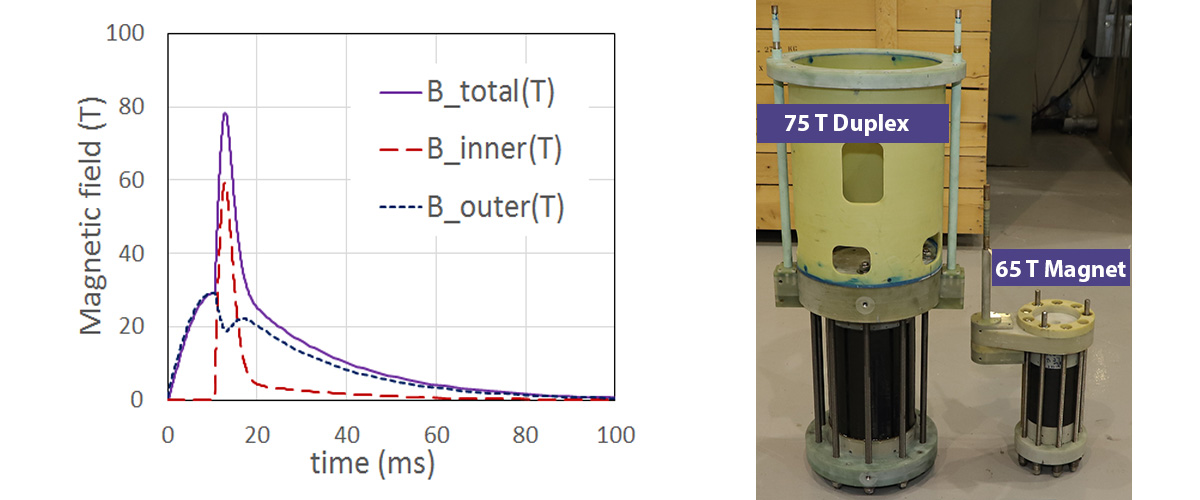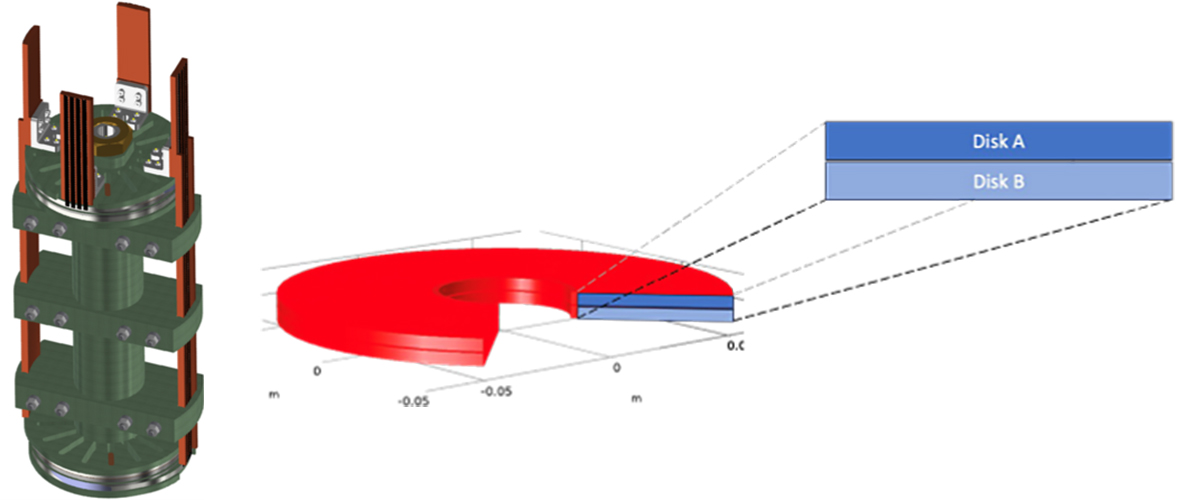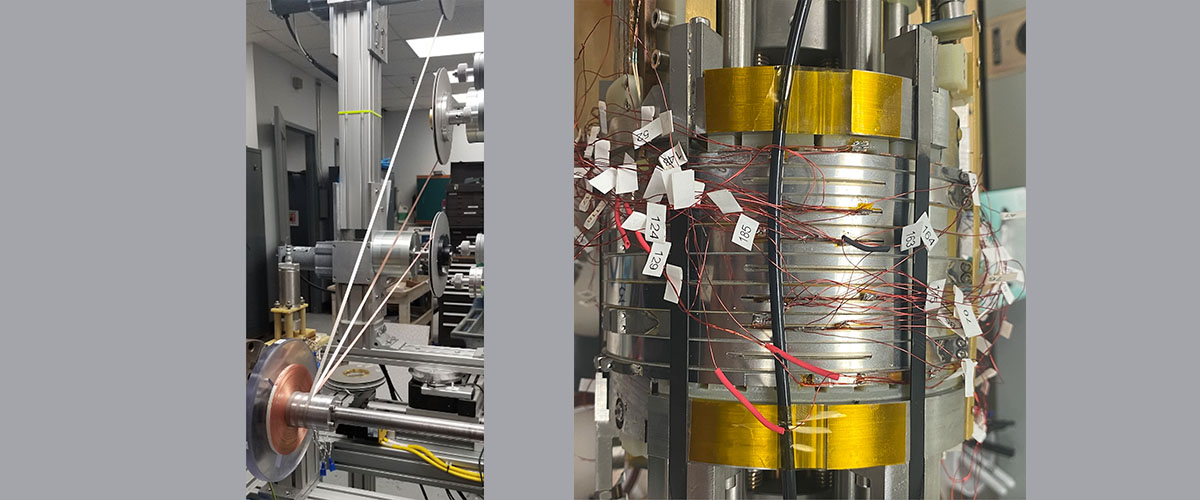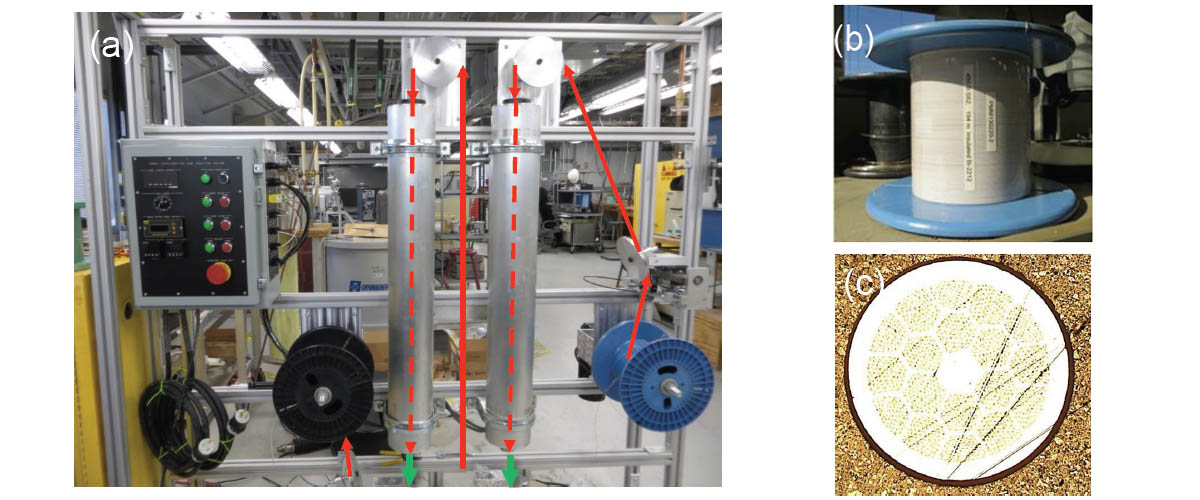What did scientists discover?
Duplex magnets are designed with two independent, nested coils energized by two separate capacitor banks. A new magnet providing 75T pulses to users was developed at the MagLab's Pulsed Field Facility. It enabled researchers to track quantum oscillations, a standard signature of a metal, deep into a metallic state that only exists at magnetic fields above 46T in YbB12, a mysterious compound made of Ytterbium and Boron.
Why is this important?
YbB12 has long been known to exhibit quantum oscillations even in a low-magnetic-field regime in which the compound is an electronic insulator. Until recently, an insulator that exhibits quantum oscillations would have been considered an oxymoron and a physical impossibility. However, the extended magnetic field range of the duplex magnet enabled this experiment to link the quantum oscillations in the high-magnetic-field metallic state to the quantum oscillations in the low-magnetic-field insulating state, proving that they arise from the same particles and, thus, putting on firm ground a new understanding wherein insulators can exhibit quantum oscillations.
Who did the research?
Magnet: Doan N. Nguyen, James R Michel, Jason D. Lucero, Pulsed Field Facility at MagLab/LANL Science: Z.Xiang, L.Chen, K-W.Chen, C.Tinsman, Tomoya Asaba, Lu Li, Univ. of Michigan; Y.Sato, Y. Kasahara, Y.Matsuda, Kyoto University; H.Lu, M.Jaime, F.Balakirev, J. Singleton, MagLab/LANL; F.Iga, Ibaraki University
Why did they need the MagLab?
The MagLab's Pulsed Field Facility has long been a leading center in design and construction of high-field pulsed magnets designed for ease of operation by users. The duplex magnet enabled this scientific conclusion by providing an extended range over which the sensitive measurement of quantum oscillations could be made.
Details for scientists
- View or download the expert-level Science Highlight, First Science from the 75T Duplex Magnet
- Read the full-length publication Design, Construction, and Operation of New Duplex Magnet at Pulsed Field Facility-NHMFL, in IEEE Transactions on Applied Superconductivity.
- Read the full-length publication Unusual high-field metal in a Kondo Insulator, in Nature Physics
Funding
This research was funded by the following grants: G.S. Boebinger (NSF DMR-1644779)
For more information, contact Doan Nguyen.






